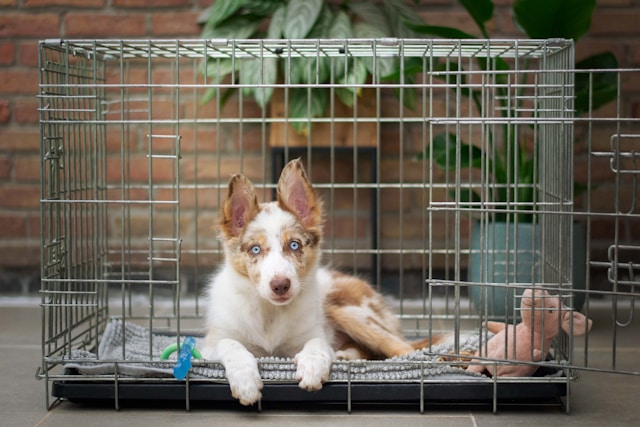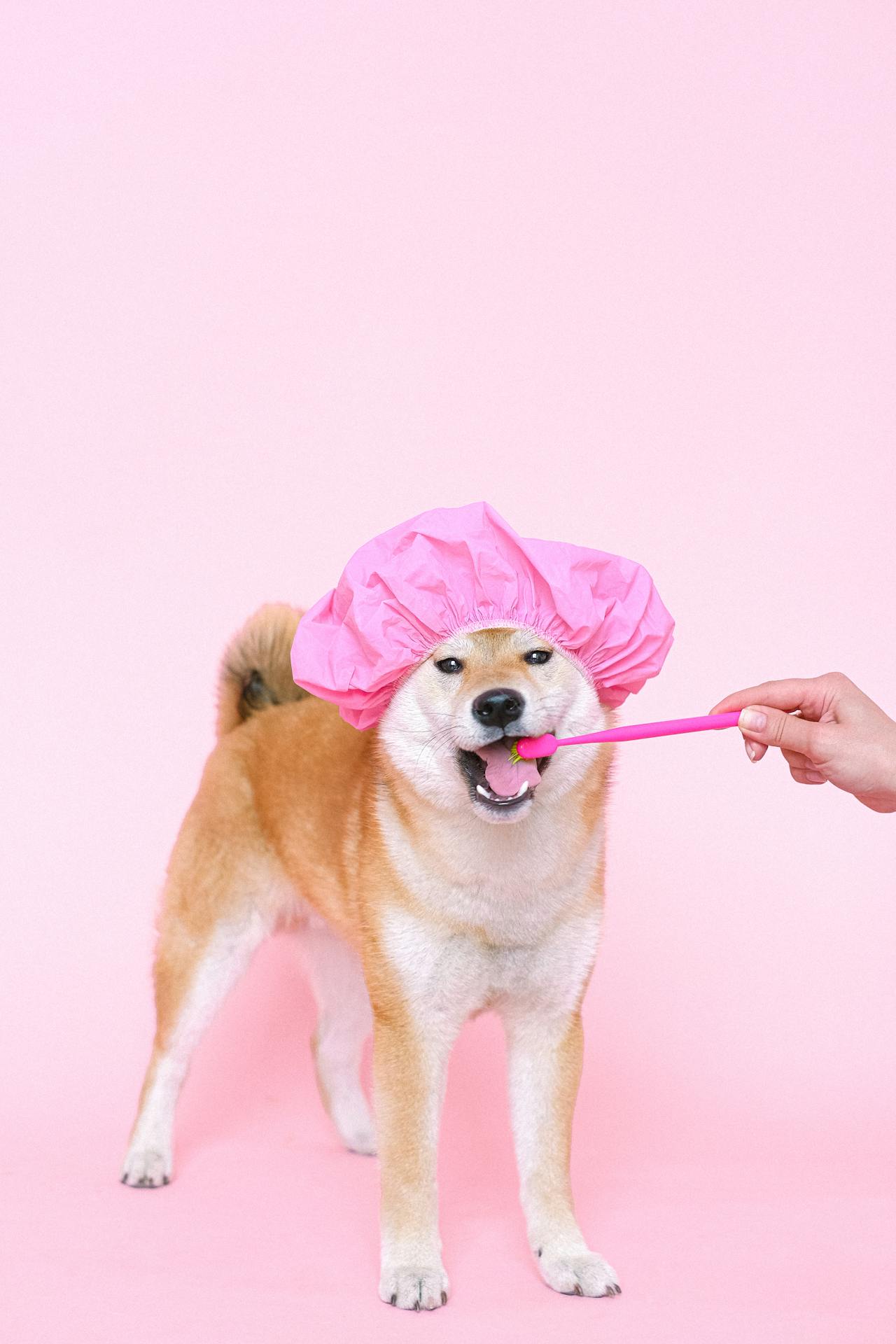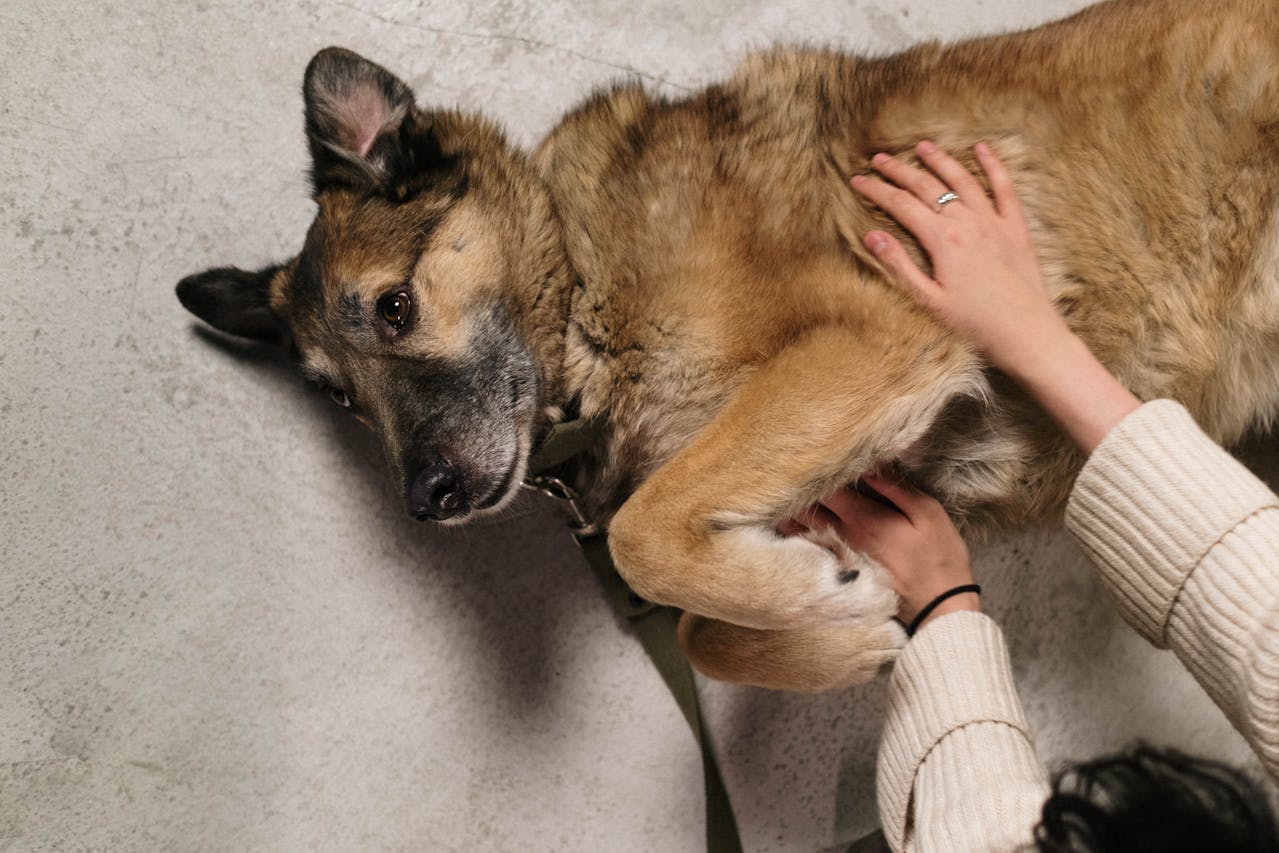Puppy Crying in the Crate? Here’s How to Help

When used correctly, crate training fosters independence and gives your puppy a safe, comfortable space to retreat when they’re tired or overstimulated. But what if your puppy cries in the crate? Let’s explore why this happens and how you can help.
Why Puppies Cry in the Crate
Although a crate should feel like a secure haven, not all puppies adapt to it immediately. There are several reasons a puppy might cry while crated:
-
Fear of the unfamiliar: A puppy who has never seen a crate may cry due to fear or confusion. They may feel trapped or unsure in the new space.
-
Separation from littermates: Newly rehomed puppies are used to the comfort of sleeping beside their littermates. Being alone can feel lonely and upsetting.
-
Separation anxiety: If crated while their owner leaves the house, some puppies may panic, feeling abandoned or isolated.
-
Desire for attention: Puppies crated while others are nearby might cry out for interaction, feeling left out or bored.
-
Need to relieve themselves: Puppies have small bladders and may cry when they need to go outside.
Is It Normal for Puppies to Cry in the Crate?
Yes—especially in the beginning. Most puppies are adopted around 8 weeks of age and go from sleeping with their litter to sleeping alone. It’s natural for them to express fear or discomfort by crying, whining, or barking.
While this behavior is common, it’s essential to reduce their stress and help them build positive associations with the crate.
How to Stop Your Puppy from Crying in the Crate
Here are several strategies to ease your puppy's adjustment to crate time:
1. Start by Ignoring Brief Whining
When you first crate your puppy, try ignoring initial crying. Often, puppies are simply “contact calling”—checking if you're nearby. If the crying stops within a minute or two, it’s best not to respond.
If the whining persists beyond two minutes, a brief verbal reassurance from a distance may help. Repeat only a couple of times to avoid reinforcing the behavior.
2. Comfort When Truly Distressed
If crying intensifies or continues, your puppy may be genuinely distressed. In this case, it’s okay to return and comfort them. While some fear this reinforces the crying, early experiences of extreme stress can affect a puppy’s emotional development.
If you prefer not to enter immediately, wait for a pause in the crying or gently disrupt it with a novel noise (like a soft knock) before going in.
3. Gradually Reduce Alone Time
Persistent crying can indicate that the puppy isn’t ready to be left alone for long. Slow down your crate training process. Begin with short sessions and gradually increase the duration as your puppy becomes more comfortable.
4. Make the Crate Inviting and Positive
Your puppy should see the crate as a cozy, safe space—not a punishment. Try the following:
-
Place the crate in a family gathering area during the day.
-
At night, position a crate in your bedroom so your puppy isn’t isolated.
-
Add a soft bed (if safe), toys, and calming aids like pheromone diffusers or soothing music.
-
Offer treats and praise when the puppy enters the crate voluntarily.
5. Offer Frequent Potty Breaks
Young puppies need regular bathroom breaks. A general guideline: take your puppy’s age in months and add one to determine how many hours they can hold it. For example, a 2-month-old can typically wait about 3 hours.
If your puppy is having accidents, increase potty breaks and build up slowly.
6. Ensure Sufficient Physical and Mental Stimulation
A tired puppy is more likely to settle. Engage your puppy in play sessions with toys like tug ropes or flirt poles. Puzzle toys or frozen KONGs are also excellent for mental stimulation.
However, if your puppy has developed a fear of the crate, even physical exhaustion might not prevent crying. In these cases, further desensitization may be necessary.
When Crate Crying Becomes a Concern
While some crying is expected during crate training, excessive or intense distress isn’t normal. If your puppy seems especially fearful or training isn’t progressing, consider consulting a certified applied animal behaviorist or a veterinary behaviorist for professional guidance.
Frequently Asked Questions
How long can I let my puppy cry in the crate?
It’s okay to let a puppy cry for a few minutes to give them a chance to self-soothe. If the crying continues or escalates, intervene with a gentle voice or soothing presence.
How can I calm my puppy in the crate at night?
Use calming pheromones, a familiar-smelling item like a worn T-shirt, or a plush toy with a heartbeat and heat pack to mimic the comfort of sleeping with littermates. Light touch or your voice can also help them settle.
Will covering the crate help?
Yes. Draping a blanket over the crate can create a den-like atmosphere and block out visual stimuli, making it easier for your puppy to relax.
Why is my puppy screaming for hours in the crate?
Extended screaming isn’t normal and could signal fear, pain, hunger, or a need to relieve themselves. Puppies should be gradually introduced to longer crate sessions and never left for long stretches right away.
With patience, consistency, and compassion, most puppies adjust to crate training within a few weeks. By understanding their needs and responding appropriately, you’ll help your puppy build confidence and security in their new home.
Get insurance plans with wide-ranging coverage options













